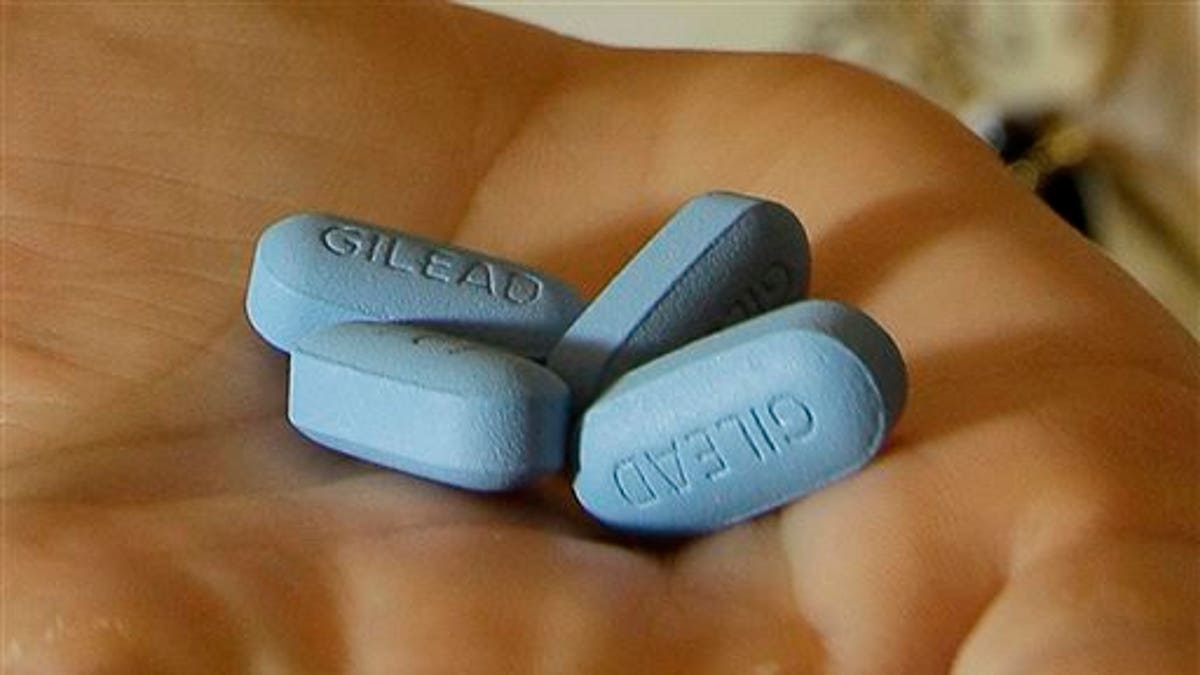
In this Thursday, May 10, 2012 file photo, a doctor holds Truvada pills at her office in San Francisco. (AP Photo/Jeff Chiu)
The rate of new HIV infections among gay and bisexual men could drop by up to a third over the next decade if enough eligible men take a drug that protects against the virus, researchers estimate.
According to the U.S. Centers for Disease Control and Prevention, eligible gay and bisexual men meet any of three criteria: they have unprotected anal sex in a monogamous relationship with a partner not recently tested for HIV, or they have unprotected anal sex with a partner outside of a monogamous relationship or they have any anal sex with someone who is HIV positive.
Getting the drug, known as Truvada and manufactured by Gilead, to 40 percent of high-risk men would prevent 1,162 infections among every 100,000 gay and bisexual men over 10 years, researchers estimate in The Journal of Infectious Diseases.
The daily pill is a combination of two antiretroviral drugs that work to keep the human immunodeficiency virus (HIV), which causes AIDS, from reproducing in the body. Approved by the U.S. Food and Drug Administration in 2012, Truvada is often just referred to as PrEP, which stands for pre-exposure prophylaxis.
"We were all interested in estimating the public health impact and efficiency of PrEP," said Samuel Jenness, the study's lead author from Emory University in Atlanta.
Jenness and colleagues point out that PrEP is 92 percent effective in preventing HIV infections.
To see how PrEP might change the number of new infections over the next decade, the researchers used a mathematical model that took into account HIV transmission rates among men who have sex with men and the CDC guidelines.
They ran several scenarios through the model and found that getting PrEP to 40 percent of eligible men - and having 62 percent stick to the daily regimen - would avert 33 percent of expected infections among all gay and bisexual men in the U.S. over the next decade, compared to a scenario in which the drug was not available.
Getting PrEP to 10 percent of eligible men would avert about 11 percent of expected new infections, and increasing coverage all the way to 90 percent would avert about half of cases, the researchers calculated.
In a scenario where 40 percent of eligible men take PrEP, the researchers say, having 25 men taking the pill every day would prevent one new HIV infection.
Counseling men on adhering to the daily pill would maximize the public health investment by decreasing the number of men needed to treat to prevent one infection, they add.
Jenness told Reuters Health that currently, 5 percent to 10 percent of gay and bisexual men take PrEP.
In an editorial published with the study, an HIV expert said he's not sure it's actually possible to get 40 percent of eligible gay and bisexual men to take PrEP.
"However, PrEP studies from the United States, the United Kingdom, Canada, France, and other high-income countries are showing that those who seek out PrEP have substantial HIV risk and adhere well, resulting in near elimination of HIV acquisition," writes Dr. Jared Baeten, of the University of Washington in Seattle.
Those results show the men currently starting PrEP are good candidates, he said.
